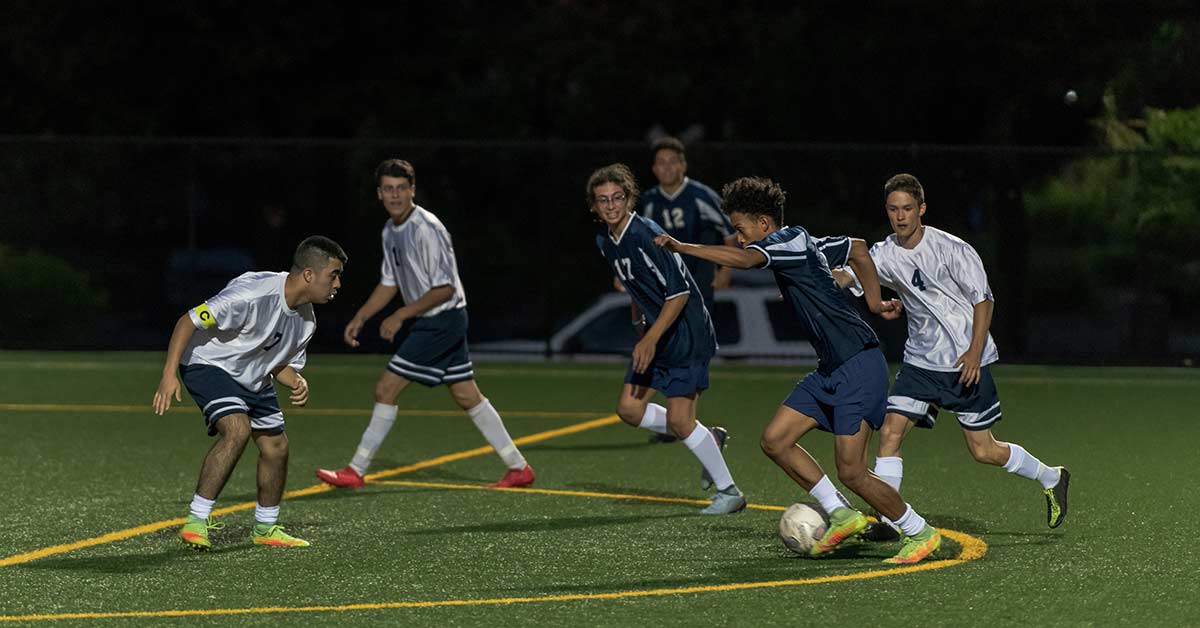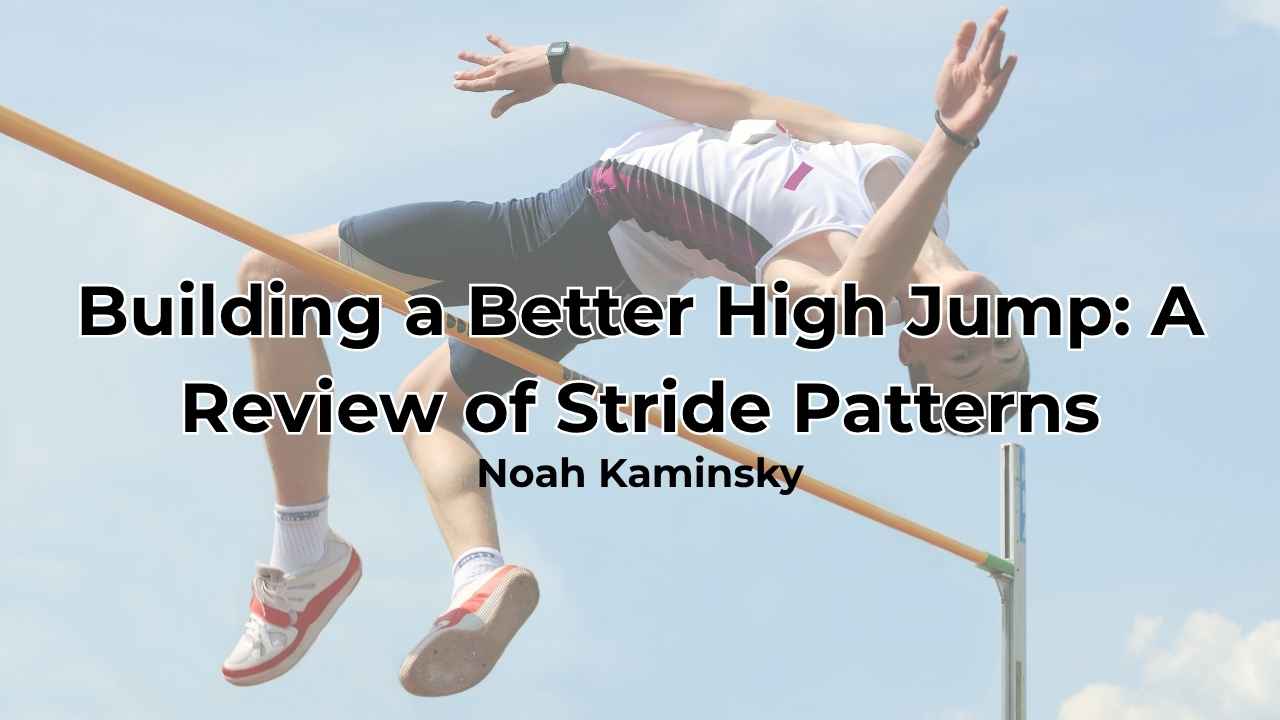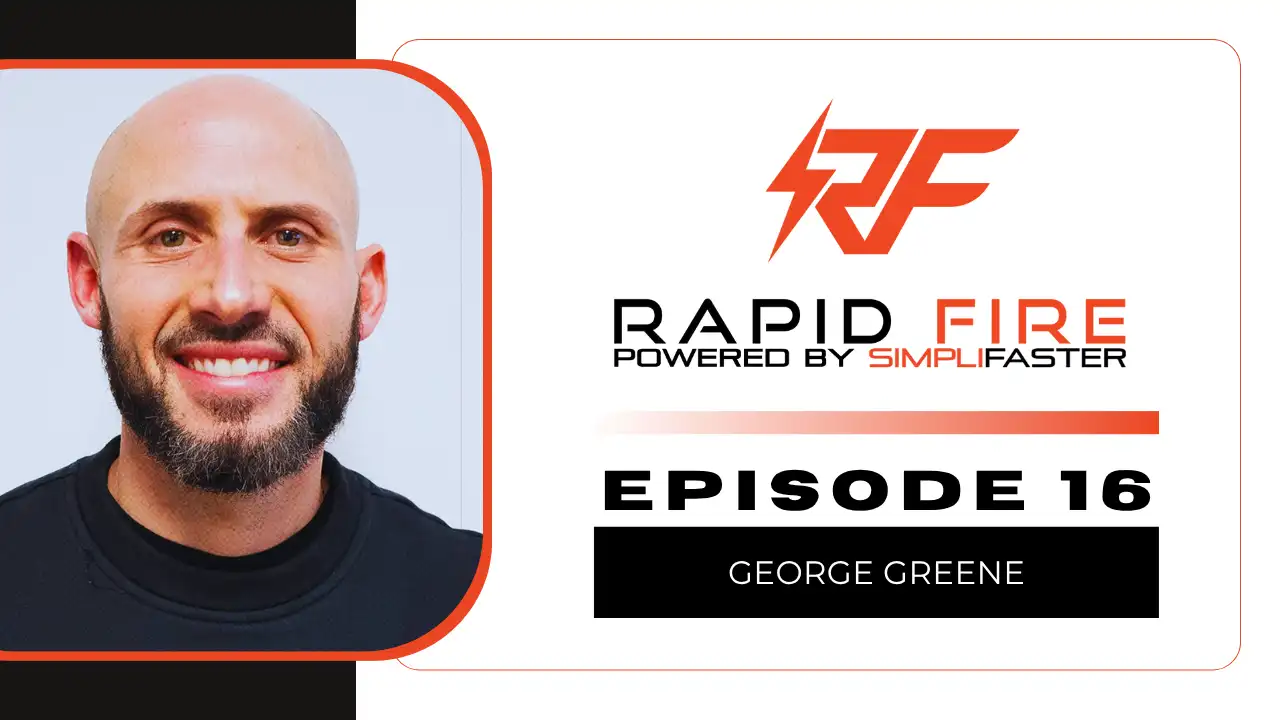[mashshare]

By Eric Udelson
It is no secret that, in the past decade, soccer in America has seen significant advancement in terms of popularity and also its ability to cultivate talent, as evidenced by the U.S. Men’s National Team ultimately reaching the highest level of international soccer. Look no further than Christian Pulisic, who at only 20 years old was recently acquired by Chelsea F.C. of the Premier League in England (widely considered the best league in the world) for $73 million. So, relative to the standing of American soccer a few years ago, there has been major growth, yet there is still significant work to be done to catch up to dominant nations like Brazil, Spain, and France.
Although the development of young soccer talent has improved, there still are some very concerning practices and beliefs from coaches and parents that impede athletic development. As a player myself, I’m well aware that success in this game is about much more than athleticism. But why not maximize our young players’ physical capabilities so they can be stronger, faster, and fitter athletes while simultaneously making them more injury-resistant?
Why not maximize our young players’ physical capabilities so they can be stronger, faster, and fitter athletes while simultaneously making them more injury-resistant? Share on XThis article will detail various issues with America’s development of youth soccer players that only seem to hinder athletic development, and it will provide potential solutions for this critical aspect of the future of American soccer.
The Scope of the Problem
Among the plethora of issues that exist with youth soccer development in America, one of the premier issues is the overscheduling of games in a season. Specifically, this issue refers to players having too many games concentrated in a short time period rather than having too many overall games. This distinction is important because the central problem is the insufficient rest period in between games and not the specific number of games in a season. Similarly, you could also add that the ratio of training sessions to games could be altered to having fewer games and more training.
During my progression through youth soccer growing up in Massachusetts, I had firsthand experience with this type of chaotic schedule. From the ages of 12–16 years—extremely key years in athletic development—I played on the pre-academy team for a club team called the FC Boston Bolts. The other teams in our division consisted of clubs that were spread out along the East Coast, going down as far as Pennsylvania, so naturally there was a fair amount of travel involved.
The problem lay in the fact that there were multiple teams in the Pennsylvania area and multiple teams in the Boston area, so when it came time to travel down south to play these teams, the league decided to create a double-header format with a game on Saturday and another on Sunday. The logic behind this scheduling made sense from an efficiency standpoint, as making just the one trip to Pennsylvania was already expensive and time-consuming, especially when discussing youth soccer for 13-year-olds. Yet, when speaking in terms of youth athletic development, the concept of competing in 90-minute games on two consecutive days is criminal and most likely destructive.
Even more outrageous is the format of youth soccer tournaments at the town level. For me, this was during ages 9–12. We would have tournaments that consisted of three games per day during a two-day period! Even as a young kid with all the energy and enthusiasm in the world, I vividly remember slogging through that last game of the day really just trying to cross the finish line rather competing at my best level.
The Baggage of Competition
Why is the over-concentration of games so damaging? Intriguingly, on the surface it may not seem so destructive, as young pre-adolescent and adolescent kids seem to be significantly less affected by an overload of volume. Better yet, young kids also will most likely maintain the same enthusiasm while being overworked compared to college athletes. When you’re that young, you just love playing in games and most likely won’t be as transparent about sore muscles or aches/pains. Nonetheless, the fact remains that the large number of games in a short time period causes excessive fatigue and stress on youth athletes during possibly their most important period for athletic development.
The over-concentration of games in a short time period causes excessive fatigue and stress on youth athletes during possibly their most important period for athletic development. Share on XThis issue plays out in the classic “domino effect” format. For instance, if a 14-year-old player plays two full games during the weekend, they build up in inordinate amount of fatigue that requires more time than normal to recover from. Therefore, when they report to training on Tuesday, they will likely not have recovered to an adequate level to compete again and will therefore be performing at a lesser intensity (intensity referring to explosive change of direction movements, sprint speed, neuromuscular firing rates) than is normal.
Training with this type of residual fatigue is not so harmful at first, but if made a habit throughout an entire season, it can take on more serious decrements and could certainly create a risk for overtraining syndrome. First among the decrements could be a decrease in explosive movements regarding maximal velocity and change of direction, both obviously invaluable markers for an athlete’s performance in soccer. More importantly, in general, if an athlete habitually trains the body at lower speeds than normal—which occurs when shouldering residual fatigue—the muscles will create a new norm, seeing as there is less demand for explosive movements. Getting into the biology, this could happen through a translation of type II muscle fibers to less-explosive type I fibers within their muscle on a molecular level.
Other than performance decrements, overscheduling games during crucial adolescent years could increase the risk of injury. During an athlete’s adolescent years, their tissues (muscles, tendons, ligaments) are still developing in terms of size, and also in terms of integrity. Take, for example, a college soccer player who has two training sessions in one day for their preseason versus a 13-year-old boy who participates in a double-header like that of my personal example.
Assuming no previous injury for either party, the college athlete would be better able to handle high workloads, as they have more collagen content in their tissues, giving them a greater ability to withstand high levels of pounding on tissues from high-intensity exercise without sustaining injury. Conversely, the 13-year-old is in the midst of puberty, which is, among other things, a time of immense anatomical development. His tissues are not as densely packed with shock-absorbing collagen, creating a greater chance of the tearing of tissue fibers from continued stress.
How to Fix the Problem with Realistic Solutions
There are simple solutions for this problem, many of which rely on rational scheduling and therefore manipulation of workload. This could mean not having teams from Massachusetts in the same division as Pennsylvania teams, as there would be no need for a double-header weekend if the farthest the Massachusetts team had to travel was to New York, for example. Next, there needs to be a readjustment of the ratio of trainings to games. The ratio that should be maintained is roughly 3–4 trainings to one game per week. That way, workloads can be manipulated from session to session, depending on fatigue levels, to provide for optimal performance in the sole game of the week.
Lastly, even though some youth teams may understandably struggle for these resources, the concept of monitoring fatigue/soreness levels for youth athletes could be very useful. This is true even if the monitoring only consists of an online survey for players to fill out and doesn’t involve any sort of advanced technology. This could provide for the accurate progression of intensity throughout the week of training, instead of simply guessing based on the naked eye.
The monitoring of fatigue/soreness levels for youth athletes could be very useful, even if it only consists of an online survey for players to fill out and not any sort of advanced technology. Share on XBesides irrational scheduling, an additional issue that plagues athletic development in youth soccer is the development of poor running mechanics. The correct sprinting mechanics is something that must be taught and then reinforced, but youth soccer players seem to almost completely ignore it. This means that players will develop various bad habits and maintain those habits until they are shown otherwise.
My belief is that most of these habits develop from players thinking they are employing mechanics that are advantageous to the game of soccer. For instance, a common error for youth players is that, while sprinting, they will be hunched over with an arched back and shoulders shifted forward. This habit might be advantageous while dribbling, as it’s important to have an athletic, crouched stance to ward off defenders, but while sprinting, these principles only reduce speed. Instead, during maximal velocity sprinting, players should be taught to be upright with shoulders relaxed and shifted back.
Another example of poor mechanics common with youth soccer is players having short, choppy strides. Because of these choppy strides, these players cannot drive their knees to an adequate height, which in turn detracts from the amount of force they can generate into the ground, ultimately reducing speed. Again, this technique is quite useful while dribbling or during any situation where they need a quick change of direction. However, in terms of sprinting, players should adopt longer, more power strides, particularly focusing on driving their knees vertically, combined with aggressive arm action.
Of course, young kids most likely will not want to hear a technical explanation of proper mechanics, so a simpler takeaway is that moving your feet faster does not necessarily mean more speed. I think it’s possible that youth players try to emulate their favorite professional players who are undersized but lightning-quick, like Lionel Messi, and in an attempt to appear faster, these youth players actually develop inefficient mechanics.
The central key to developing correct sprint mechanics early on and ridding players of bad habits is, first and foremost, to separate their sprint work from their training with the ball. This means that, other than their team training that involves ball work, players should consider adding a few sessions per week, or even 30 minutes before a team session, that is completely devoted to speed work. This way, they can develop mechanics within a sprinting context and not within a soccer context.
The central key to developing correct sprint mechanics early on and ridding players of bad habits is, first and foremost, to separate their sprint work from their training with the ball. Share on XIt’s crucial that sprint work is completed without the ball because it gives kids a chance to really hone their mechanics without having to worry about controlling a ball simultaneously. Developing sprint mechanics can be a gradual process when starting from scratch like many youth players do. Sometimes it will require an entire session’s worth of reps to make progress on one, single aspect of sprinting, such as arm action or staying upright. Therefore, if they’re to make progress, youth players cannot be overstimulated with an overload of cues or the addition of a ball. Players should be trained to sprint like sprinters, not like soccer players, which requires the right environment and belief in the gradual process of motor learning.
Changing the Culture and New Horizons
Speaking to what is limiting athletic development in youth soccer, we have discussed poor scheduling that leads to undue fatigue, as well a lack of emphasis on proper running mechanics. Yet there is another deficiency of the American youth soccer system that is more of a culture problem. Specifically, I’m referring to the widespread mistrust toward resistance training for youth soccer players.
Unfortunately, a negative stigma has developed around weight lifting for youth players that is not founded in objective science or factual evidence. It seems that this mistrust is based on various misconceptions about resistance training for youth athletes, the first of which is that weight lifting is unsafe for adolescents and could cause injury. This perception is, in fact, completely untrue, and the truth is quite the opposite. Assuming that loads and scheduling are handled rationally, a resistance program could actually prevent injury.
As discussed before, the research shows that if an athlete commits to a consistent schedule, weight lifting will improve tissue integrity as well as bone mineral density, both markers that aid in preventing injury. Besides better preparing your tissues, participating in plyometric exercise over a period of time can also prevent injury. For youth players who normally have limited experience in the weight room, the main focus of plyometric exercise centers around landing mechanics. Learning how to properly absorb the ground force after being airborne has been shown to be crucial for preventing knee injuries, specifically valgus knee.
Other than an unfounded fear of injury, there is also the misconception that resistance training makes young athletes lethargic and bigger in size. Although it is true that when starting a lifting program at an untrained state the athlete will most likely gain some lean body mass, this will most likely not cause any losses in quickness or speed. The central flaw in the association between being lethargic and lifting is that people assume that lifting, by definition, is based around hypertrophy (growth in muscle size). The reality is that hypertrophy is only one of the many possible training goals around which strength coaches can form a program.
For example, a freshman college football player may require more muscle size to be able to compete at his position. However, with youth soccer, it is all about providing them with a weight-lifting foundation that can yield performance improvements without disrupting natural growth by adding too much load or overcomplicated exercises. It’s very simple to choose certain exercises and devise set/rep schemes that will produce speed and explosiveness results for young soccer players while still staying light and shifty.
Any half-decent strength coach will respect a young player’s early stage of development and form their program around soccer-specific workouts that will improve the player’s athletic prowess without gaining too much mass to create any lethargy. A properly managed lifting program will also improve a young athlete’s neuromuscular skill. A growing awareness of the body and its movements is crucial for sport performance, as it allows muscle actions to be executed with more fluidity and less energy, which is distinct from physical measures like improving speed or agility.
Of the current issues that seem to be limiting youth soccer athletic development, reversing the stigma associated with lifting may prove the most challenging. Unfortunately, there will always exist a certain population that will hold its beliefs even if objective scientific research shows otherwise. The best we can do as members of the sports science world is try to educate and debunk any irrational fears that are held by youth players, coaches, or even youth player’s parents.
Of the current issues that seem to be limiting youth soccer athletic development, reversing the stigma associated with lifting may prove the most challenging. Share on XOne more important step in convincing people who have set feelings about weight lifting is attacking the source of their feelings. Many of these people who need convincing view resistance training as an activity based around machismo—lifting massive weights to obtain the largest muscles possible. If we can educate people that resistance training for youth players is a carefully crafted process that will be soccer-specific and tailored toward developing a strength foundation and injury prevention, considering a youth player’s early stage of development, then maybe we can change the narrative.
What the Future Holds
Although youth soccer has made great leaps in terms of being taken seriously on the world stage, we can do better to develop dominant young athletes. This means connecting those who are uninformed to science-based methods that have been shown to lead to major performance increases, whether that concerns improving speed, conditioning, or injury resistance. Only relatively recently have there been MLS teams that create full-time positions for sports scientists; meaning that the field is being taken more seriously, with the intention of obtaining any competitive advantage possible. This sort of mentality and respect for performance science needs to be adopted by youth soccer so that we can cultivate dangerous athletes and hopefully start on the path to rival the best soccer nations in the world.
Since you’re here…
…we have a small favor to ask. More people are reading SimpliFaster than ever, and each week we bring you compelling content from coaches, sport scientists, and physiotherapists who are devoted to building better athletes. Please take a moment to share the articles on social media, engage the authors with questions and comments below, and link to articles when appropriate if you have a blog or participate on forums of related topics. — SF
[mashshare]




